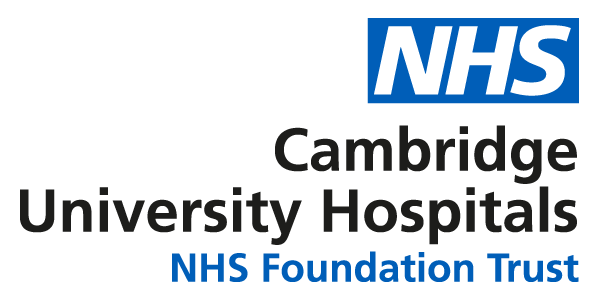Neck pain can arise from a multitude of causes. Often, it results from muscle strains or ligament sprains due to poor posture, repetitive movements, or sudden trauma. The neck is a complex structure composed of vertebrae, muscles, nerves, and soft tissues that work together to support the head and allow a wide range of motion. When any part of this system is compromised—whether by overuse, injury, or degenerative changes—the result can be discomfort that ranges from mild stiffness to debilitating pain.
In many cases, neck pain is linked to issues such as nerve compression or conditions like spinal stenosis. For example, even a slight misalignment in the spine can put pressure on nearby nerves, leading to sharp pain or a tingling sensation. Recognizing the underlying cause is the first step in choosing the right treatment approach. Detailed information on these mechanisms can be found in resources like back and neck pain relief, which explain how trauma or chronic strain can affect spinal health.

Common Questions About Neck Pain
People experiencing neck pain often wonder about its origins and the best ways to address it. Here are some frequently asked questions:
What causes neck pain?
The most common culprits include:
- Muscle Strain and Ligament Sprain: Overuse, poor posture, or sudden movements can overstress the neck muscles.
- Nerve Compression: Herniated discs or bone spurs may press on nerves, causing pain.
- Poor Ergonomics: Incorrect seating positions and workstation setups can gradually lead to discomfort.
- Degenerative Changes: Over time, wear and tear on the cervical spine may result in conditions such as arthritis.
When should professional help be sought?
If neck pain is accompanied by symptoms like numbness, weakness, or radiating pain into the arms, it might signal a more serious condition. Persistent pain that does not improve with self-care measures also warrants a consultation with a healthcare provider or a specialist in spine care.
Is neck pain always due to bad posture?
While poor posture is a significant factor, it is not the only cause. Even individuals with good posture can experience neck pain due to injury, stress, or underlying medical conditions. Therefore, it’s essential to evaluate all potential contributing factors.
Home Management Strategies
Many instances of neck pain can be managed at home through a combination of rest, exercise, and self-care strategies. Here are several methods that have proven effective:
Rest and Self-Care:
Taking regular breaks from repetitive activities and allowing the neck to rest can help reduce inflammation and promote healing. Over-the-counter pain relievers may provide temporary relief, but they should be used in moderation and not as a long-term solution.
Heat and Cold Therapy:
Alternating between cold compresses and heat pads can alleviate pain and reduce muscle tension. Cold therapy is generally effective in the first 24–48 hours after an injury, while heat therapy can be useful for chronic muscle tightness.
Gentle Stretching and Exercise:
Engaging in light stretching exercises helps maintain flexibility and strength in the neck muscles. Simple movements—such as slowly turning the head side to side or tilting it forward and backward—can improve range of motion and reduce stiffness over time.
Ergonomic Adjustments:
A significant portion of neck pain stems from an unergonomic workstation. Following practical advice on office ergonomics can help alleviate pain. Adjusting your chair, monitor, and keyboard setup ensures that the neck and spine remain in proper alignment during work hours.
The Role of Ergonomics in Neck Pain Relief
One of the most effective ways to prevent and manage neck pain is by setting up an ergonomic workspace. Here are a few tips to help you create an environment that supports good posture and reduces strain:
- Chair and Desk Height: Ensure that your chair supports your lower back and allows your feet to rest flat on the floor. Your desk should be at a height where your elbows are close to a 90-degree angle.
- Monitor Positioning: Place your computer monitor directly in front of you at eye level, about an arm’s length away. This prevents the need to tilt your head upward or downward.
- Keyboard and Mouse Placement: Keep these within easy reach, so your shoulders can remain relaxed. Avoid straining to reach them as this can increase muscle tension.
Incorporating these small changes can make a substantial difference over time. For additional strategies and detailed guidelines, consider exploring resources on office ergonomics.
When and How to Use a Cervical Collar?
For some cases of neck pain—particularly those stemming from injury or post-surgical recovery—a cervical collar may be recommended. A cervical collar is designed to restrict movement, providing support to the neck while it heals. However, it’s important to understand both its benefits and limitations.
Why Use a Cervical Collar?
Cervical collars help to:
- Stabilize the Neck: By limiting movement, a collar minimizes the risk of further injury during the healing process.
- Reduce Pain: Restricting movement can alleviate pain associated with nerve compression or muscle strain.
- Aid Recovery: In the early stages following an injury, the collar gives the neck muscles a chance to rest and recover.
Guidelines for proper collar use are available from trusted sources like the cervical hard collar guide and advice on wearing a neck collar. These resources detail how to properly wear, remove, and care for the collar to prevent skin irritation and ensure effective support.
When Should a Collar Be Used?
A cervical collar is typically used for:
- Acute Injuries: After sustaining a neck injury, such as a fracture or severe sprain, the collar provides temporary support.
- Post-Surgical Recovery: Following certain surgeries, wearing a collar can help stabilize the neck during the critical healing phase.
While collars can be invaluable during recovery, they are not a permanent solution. Long-term reliance on a cervical collar may lead to muscle weakness, so it is important to follow a guided rehabilitation program as your symptoms improve.
Professional Treatment Options
For neck pain that persists despite home care efforts, seeking professional evaluation is essential. A multidisciplinary approach can provide a range of treatments tailored to your specific condition. Here are some of the options often considered:
Physical Therapy:
A physical therapist can guide you through exercises designed to strengthen the neck muscles, improve flexibility, and promote better posture. Customized exercise regimens and manual therapy techniques are frequently recommended to address chronic pain.
Chiropractic Care:
Chiropractic adjustments aim to realign the spine and relieve pressure on the nerves. Many individuals find that regular visits to a skilled practitioner can significantly reduce their neck pain and improve overall mobility. Information on specialized care is available from spine specialists, who often combine chiropractic care with other treatment modalities.
Pain Management:
In some cases, doctors may prescribe medications or recommend minimally invasive procedures such as nerve blocks to reduce pain and inflammation. These approaches can be particularly effective for those experiencing severe discomfort that interferes with daily activities.
Surgical Interventions:
Surgery is generally considered only when conservative treatments fail to provide relief. Options such as decompression surgery or spinal fusion may be appropriate for patients with structural abnormalities that cause persistent nerve compression. Detailed information on surgical considerations can be found in the spine surgery guide, which explains the risks, benefits, and recovery processes involved.
An Integrated Approach to Neck Pain
Managing neck pain effectively often requires a combination of self-care, professional treatments, and lifestyle adjustments. Here are some strategies to integrate various approaches:
Lifestyle Modifications:
Maintaining a healthy weight, staying physically active, and managing stress are all crucial for long-term neck health. Over time, factors such as excess weight or chronic stress can contribute to muscle tension and exacerbate pain. Regular exercise—not only strengthens the neck and shoulder muscles but also improves overall circulation—can be an essential part of a comprehensive treatment plan.
Consistency is Key:
Recovery from neck pain is rarely instantaneous. It often involves a gradual process of reconditioning the muscles and making ongoing ergonomic improvements. Patience and adherence to a prescribed exercise regimen are vital for sustained improvement.
Customized Care Plans:
Many healthcare centers now offer personalized care plans that combine non-surgical treatments with lifestyle coaching and physical therapy. For instance, facilities like AdventHealth North Pinellas and AdventHealth Wesley Chapel provide multidisciplinary spine care that is designed to address individual needs, ensuring that every aspect of neck pain—from the root cause to symptom management—is properly addressed.
Addressing Myths and FAQ’s
In the journey to manage neck pain, several misconceptions can often cloud judgment. Here are some common myths and the corresponding facts:
Myth: Neck pain is always the result of poor posture.
Fact: While bad posture can contribute to neck pain, it is not the sole cause. Injuries, degenerative conditions, and even stress-related muscle tension can also play a significant role.
Myth: A cervical collar is a cure-all solution.
Fact: Cervical collars provide temporary support and help during the initial phases of recovery, but they are not meant for long-term use. A balanced rehabilitation program is necessary to rebuild muscle strength and prevent dependency.
Myth: Surgery is the only option for chronic neck pain.
Fact: Most cases of neck pain are effectively managed with non-surgical treatments, such as physical therapy, chiropractic care, and lifestyle modifications. Surgery is reserved for specific conditions where structural abnormalities are clearly identified and conservative measures have failed.
Myth: Rest is the best way to cure neck pain.
Fact: While rest is important, too much inactivity can lead to stiffness and muscle weakness. A gradual return to gentle movement and regular exercise is crucial for recovery.
Practical Tips for Preventing Neck Pain
Prevention is always preferable to treatment. By adopting a few simple habits, it’s possible to reduce the risk of developing neck pain or to prevent it from worsening if it already exists:
- Regular Movement: Avoid prolonged periods of sitting or remaining in one position. Stand up, stretch, or take a short walk every 30–60 minutes to keep the muscles active.
- Proper Sleep Posture: Use a supportive pillow that keeps the neck aligned with the spine. Avoid sleeping on your stomach, as this can strain the neck.
- Strengthening Exercises: Incorporate exercises that target the neck and shoulder muscles into your daily routine. These exercises not only alleviate pain but also build resilience against future injuries.
- Mindful Technology Use: With the prevalence of smartphones and tablets, “text neck” has become a common complaint. Adjust the position of your devices so that you do not have to tilt your head forward for extended periods.
- Stress Management: Techniques such as deep breathing, meditation, or yoga can reduce muscle tension and improve overall well-being.
Simplifying Complex Concepts
For those new to the topic, certain medical terms and concepts can seem daunting. Here’s a simplified explanation of a few key ideas:
- Nerve Compression: This occurs when structures such as herniated discs or bone spurs press on nerves, causing pain, tingling, or numbness. Imagine a garden hose that is being pinched—the water flow is restricted, similar to how nerve signals are affected.
- Spinal Stenosis: This refers to the narrowing of spaces within the spine, which can put pressure on the spinal cord and nerves. Think of it as a tunnel that becomes too tight, limiting movement and causing discomfort.
- Cervical Collar: This is a supportive device that restricts neck movement. It acts like a brace that temporarily takes over the role of the neck muscles while they recover from injury or surgery.
When to Seek Professional Guidance?
While many neck pain cases improve with home care, there are circumstances when professional evaluation is necessary. If the pain is severe, persistent, or accompanied by symptoms such as numbness, weakness in the arms, or headaches, it is important to consult with a specialist. Early intervention can prevent complications and promote faster recovery. Consulting a spine specialist can help pinpoint the exact cause of the pain and tailor a treatment plan that meets your individual needs.
Exploring Surgical Options
For a small percentage of individuals, surgery may be necessary when conservative treatments have not provided sufficient relief. Surgical options are typically considered when:
- Structural Issues Exist: Problems such as herniated discs or severe degenerative changes may require surgical intervention.
- Chronic Pain Persists: If long-term neck pain continues to interfere with daily activities despite comprehensive non-surgical care.
- Neurological Symptoms Appear: The presence of numbness or weakness suggests that nerve function may be compromised.
Before opting for surgery, it is crucial to discuss the risks, benefits, and recovery expectations with a qualified surgeon. Detailed insights into these procedures are provided in the spine surgery guide, which outlines modern, minimally invasive techniques and what patients can expect during the recovery process.
Embracing an Active Recovery
Recovery from neck pain is often a gradual process that involves a combination of treatments and lifestyle changes. An active recovery plan might include:
- Targeted Physical Therapy: Working with a physical therapist to develop a personalized exercise regimen that focuses on strengthening and stretching the neck muscles.
- Chiropractic Care: Periodic adjustments can help restore proper alignment, alleviate tension, and improve overall function.
- Mindful Movement Practices: Incorporating activities like yoga or Pilates that emphasize posture, balance, and core strength can be very beneficial.
Active recovery is not just about alleviating pain but also about empowering individuals with the tools to prevent future episodes. Over time, as the muscles regain strength and the spine achieves better alignment, daily activities become less painful and more enjoyable.
Final Thoughts
Taking control of your neck pain today not only eases the current discomfort but also lays the groundwork for a healthier, more active future. Through a balanced approach combining self-care, ergonomic improvements, professional guidance, and, when necessary, surgical intervention, managing neck pain becomes an achievable goal that supports a better quality of life.
By breaking down complex concepts into understandable terms and addressing common concerns, this guide aims to empower anyone dealing with neck pain. Each small improvement—from adjusting your chair at work to diligently following a physical therapy program—can contribute to reducing pain and improving overall neck health.
Ultimately, managing neck pain is about integrating various strategies into a lifestyle that prioritizes spinal health. With the right approach, it’s possible to move beyond the discomfort and enjoy life with renewed energy and freedom.
Sources:










